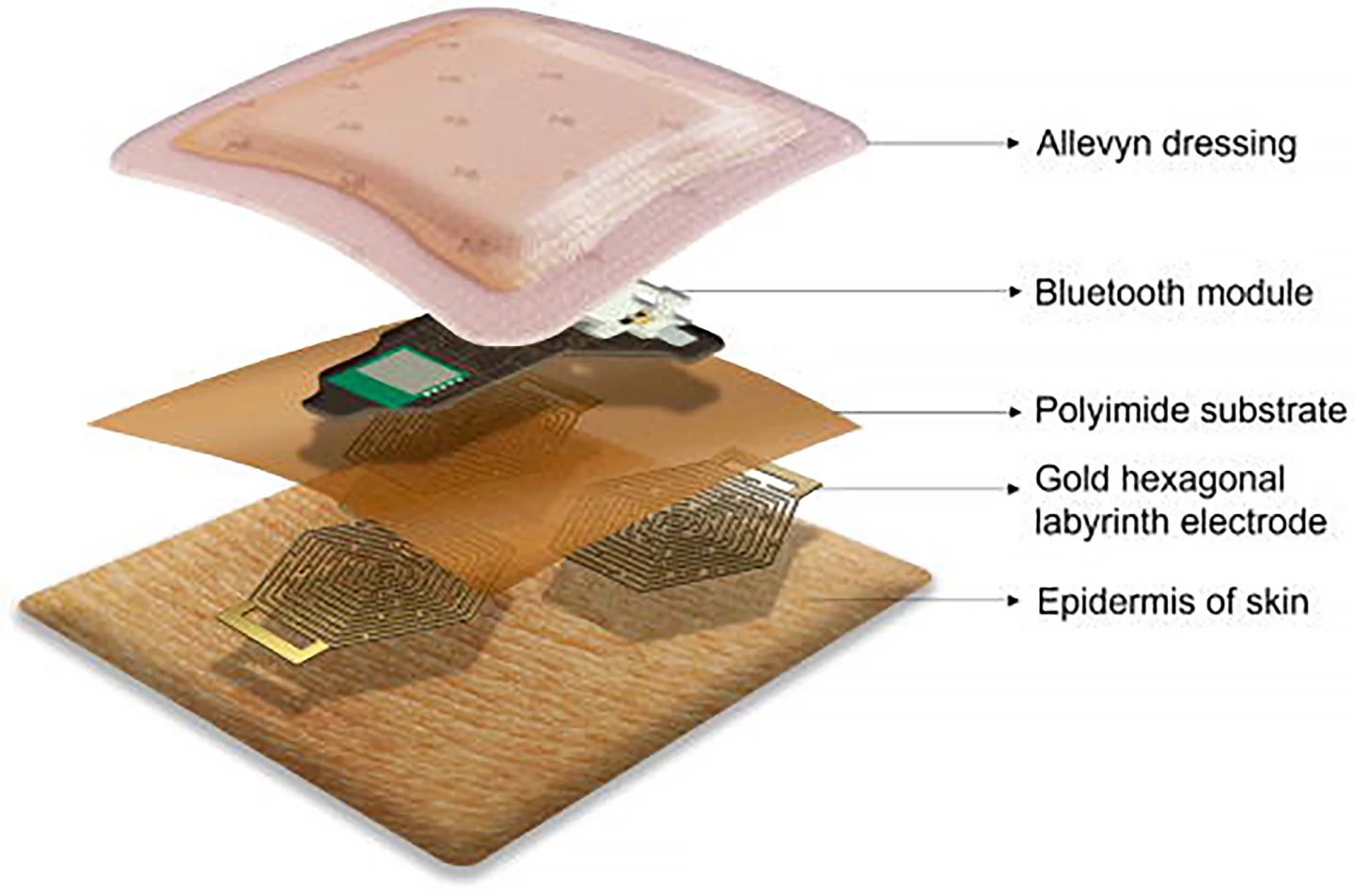Researchers have developed an ultrathin, waterproof, gel-free ECG electrode for continuous heart monitoring that offers greater comfort – and less skin irritation – than current devices on the market, while still precisely measuring the heart’s electrical activity.
ECG monitoring over time is crucial for diagnosing abnormal heart rhythms, heart attacks and angina. But those who’ve had an ECG either in a hospital or at their medical clinic will know the ickiness of having 12 cold and slimy gel-coated electrodes stuck to their chest.
Now, researchers at RMIT University have developed wearable ultrathin, lightweight, gel-free ECG electrodes that can provide continuous heart monitoring but don’t suffer from the problems commonly experienced with wet electrodes.
“Commercially available wearable ECG devices are usually bulky, heavy and have 12 ‘wet’ electrodes connecting the patient to the device, whereas the RMIT invention can fit in the palm of your hand,” said Madhu Bhaskaran, one of the study’s corresponding authors. “Wet electrodes are uncomfortable, dry out over time and have been known to cause skin irritation. The RMIT device efficiently captures the heart’s activity, whether the user is at rest or experiencing stress.”
The researchers chose to use gold as the material for their dry electrode because it’s chemically inert, highly conductive, and biocompatible. Incorporating thin gold films into their electrodes made them lightweight, with a large surface area-to-volume ratio that aided the effective acquisition of ECG signals. After experimenting with several shapes, they settled on a hexagonal design; it adheres well to the curvatures of the skin and more accurately captures ECG signals.

The device weighs only 10 g (0.3 oz) compared to other wearable ECG monitors, which typically weigh a few hundred grams. Whereas a typical ECG requires 12 electrodes, the researchers found that just three of their nano-thin electrodes could effectively monitor a person’s heart. Compared to a traditional 12-lead ECG, the dry electrodes offered a comparable level of precision.
“The dry electrodes, which are less than one-tenth the width of a human hair, are highly sensitive to the cardiac signals of the user,” said Peter Elango, lead and corresponding author of the study.
The electrodes are wireless, connecting to an ECG machine via Bluetooth. And they can be placed on areas of the body where you wouldn’t ordinarily put them, such as the back of the neck, which, while unusual, has advantages.
“The device can capture ECG signals even when it is fitted behind a person’s neck – ideal for patients in the aged care sector, including for someone with dementia who may remove it from their chest,” Elango said. “The electrodes are also hydrophobic, meaning they don’t get wet, and so a user can wear the device while they do activities in the water such as swimming and showering – unlike other ECG monitors.”
The researchers envision their wearable dry electrodes being used in remote healthcare and ambulatory care settings and as a preventive medical device. In addition to being used as a standalone device, they also have the potential to be embedded within wearable fabrics for long-term cardiac monitoring.
The study was published in the journal AIP Applied Physics Reviews.
Source: RMIT University






